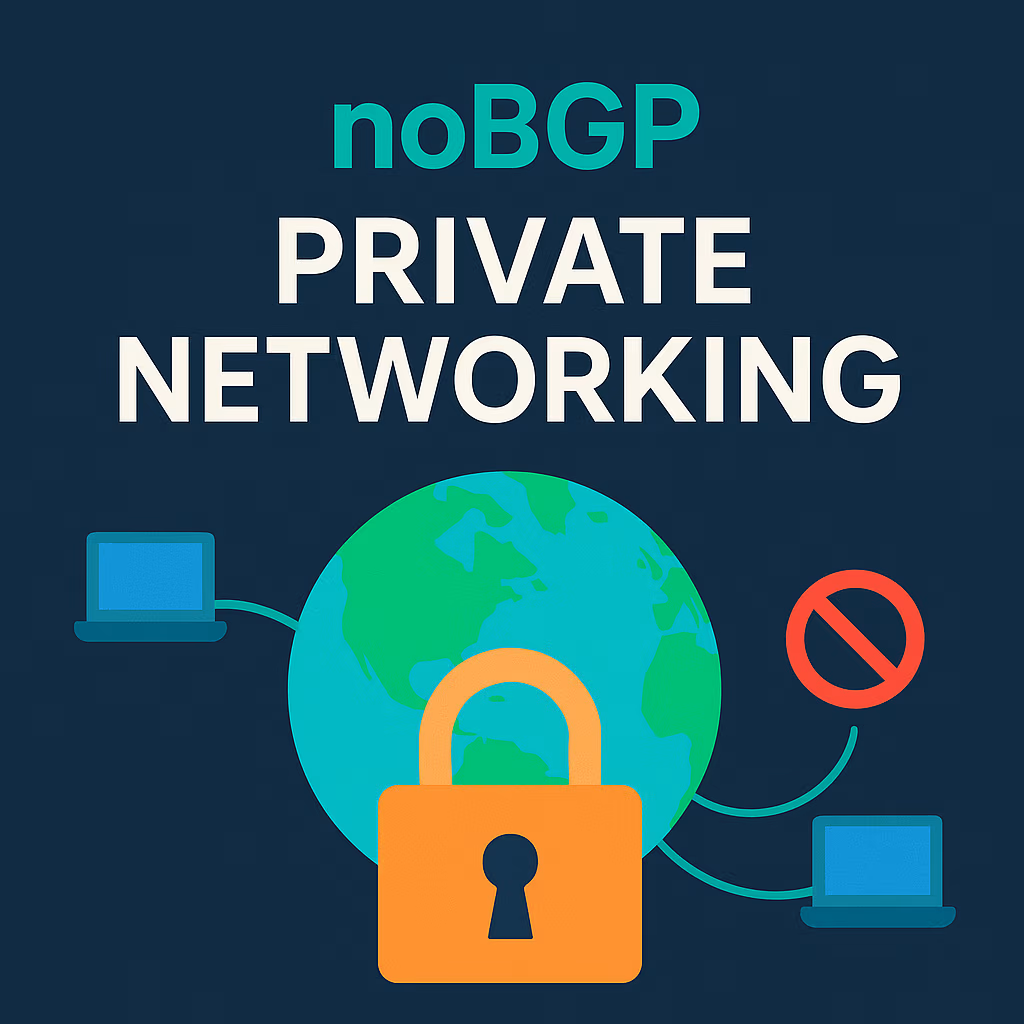
In today’s hyper-connected world, data flows across public and private infrastructure every second. But not all networks are created equal, and not all should be public.
Private networking offers a more secure, controlled, and performance-optimized alternative to the public internet. Whether you’re operating cloud infrastructure, enterprise applications, or developer tools, building on a private network protects your data and improves operational agility.
This article breaks down the core benefits of private networking and introduces how noBGP makes private networks easier to build and operate, without firewalls, NATs, or public IP exposure.
Private networking refers to the use of non-public IP addresses and isolated routing environments to create internal communication pathways between systems, services, and users.
Unlike public networks, which anyone with the right address and credentials accesses, private networks restrict access by design. Organizations commonly use them within data centers, across hybrid clouds, and inside corporate infrastructure to reduce exposure and increase control.
When you don’t expose resources to the public internet, you significantly reduce their vulnerability to:
Private networks reduce your attack surface by default. They serve as a first line of defense; invisible is safer.
noBGP Highlight: With noBGP, workloads don’t need public IPs at all. Every connection uses identity-based, outbound-only, encrypted communication, making attackers unable to scan or reach your resources.
BGP (Border Gateway Protocol) routes public internet traffic unpredictably, meaning you have no say over which ISPs, countries, or intermediaries your data touches.
Private networks give you deterministic routing:
noBGP Highlight: noBGP allows developers and network teams to define routing policies based on business intent, like avoiding certain countries, preferring low-latency paths, or isolating dev from prod traffic.
Private networking allows for tighter access policies. Instead of relying on static IP allowlists or perimeter-based firewalls, you base access on:
This proves especially useful for:
noBGP Highlight: noBGP grants access via policy, not subnet rules or port openings. You instantly grant or revoke access at the service level, not the network level.
Public networks often require:
Private networking removes the need for much of this bloat. This simplifies your security model and reduces the tools you need to secure and monitor public exposure, because there is none.
noBGP Highlight: noBGP removes the need for VPNs, NAT gateways, port forwarding, or complex cloud security group rules. Fewer boxes, rules, and risks to manage.
With private networking, data travels over more direct or optimized routes than on the congested, unpredictable public internet.
Private networks:
noBGP Highlight: With deterministic routing and overlay support, noBGP routes traffic through trusted, low-latency infrastructure even across cloud boundaries.
One of the biggest challenges with private networking is extending beyond a single environment.
Traditionally, private networks get trapped inside:
Connecting these islands requires VPNs, NAT rules, overlapping IP coordination, or complex SD-WAN setups.
noBGP removes these barriers.This enables a single, private network overlay spanning any environment: clouds, on-prem, edge, containers, or VMs. Workloads connect to each other based on identity and intent, not IP.
The benefits of private networking are clear:
✅ Stronger security
✅ Total traffic control
✅ Flexible access
✅ Simpler architecture
✅ Better performance
But historically, achieving this, especially across clouds, required painful workarounds, VPNs, and exposure trade-offs.
noBGP changes this.
noBGP gives you all the benefits of private networking without the operational complexity.
No public IPs. No attack surface. No VPNs. Secure, private connectivity across any infrastructure.